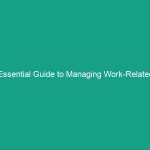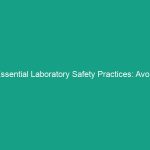Good Morning Team!
Today, we are gathered to discuss an important topic that impacts our Workplace Safety: Must-Know Disciplinary Procedures for Safety Violations: Fair Enforcement. Understanding these procedures is crucial to maintaining a safe and productive Environment for everyone. Safety is not just a priority; it is the foundation of our daily operations.
Understanding Must-Know Disciplinary Procedures for Safety Violations
Disciplinary procedures for safety violations are the steps taken to address breaches of safety protocols within the workplace. These procedures are vital for several reasons:
- Accountability: They ensure that all employees are held accountable for their actions, which fosters a culture of safety.
- Consistency: Applying the same rules to everyone helps eliminate bias and ensures that all employees understand the consequences of their actions.
- Prevention: By understanding the repercussions of safety violations, employees are more likely to adhere to safety protocols.
Common misconceptions include the belief that safety violations are taken lightly or that disciplinary actions are unfair. In reality, these procedures are designed to protect everyone in the workplace.
Key Hazards, Risks, and Safety Considerations
Ignoring safety protocols can lead to serious consequences, including:
- Injuries or fatalities, which can profoundly affect employees and their families.
- Increased medical costs and potential legal actions against the company.
- Lower morale and productivity, as a workplace that feels unsafe can lead to anxiety and disengagement.
Some specific Hazards associated with safety violations include:
- Improper use of Personal Protective Equipment (PPE), leading to avoidable accidents.
- Failure to follow lockout/tagout procedures, resulting in unexpected equipment start-up.
- Neglecting to report unsafe conditions, allowing hazards to persist and endanger others.
These risks highlight the importance of following established safety procedures and the need for fair disciplinary actions when violations occur.
Best Practices, Procedures, & Actionable Advice
To ensure safety compliance, it is essential to follow these Best Practices:
- Know the Rules: Familiarize yourself with safety protocols and company policies regarding safety.
- Report Violations: If you notice a safety violation, report it immediately to a supervisor or designated safety officer.
- Participate in Training: Engage in safety training sessions to stay up-to-date on procedures and practices.
Here are the steps for addressing safety violations:
- Identify the Violation: Document the specifics of the safety violation, including what happened, when, and who was involved.
- Evaluate Context: Consider the circumstances surrounding the violation. Was it a genuine mistake, or was there negligence involved?
- Follow Company Procedures: Adhere to the established disciplinary procedures as outlined in the employee handbook.
- Communicate Clearly: Discuss the situation with the involved employee, ensuring they understand the violation and potential consequences.
- Implement Consequences: Apply disciplinary measures fairly and consistently, based on the severity and frequency of the violation.
For example, in a past incident, an employee failed to wear required PPE while operating machinery. Upon investigation, it was found that the employee had not been adequately trained. The company provided immediate retraining and followed it with a warning. This approach rectified the situation and reinforced the importance of safety training.
Regulations, Standards, and Compliance
Compliance with safety Regulations is not just a legal obligation; it is essential for ensuring employee safety. Key regulations include:
- OSHA Standards: The Occupational Safety and Health Administration sets forth regulations that protect employees from workplace hazards.
- ISO Standards: International Organization for Standardization guidelines ensure that companies adhere to safety management systems.
- Company Policies: Specific company rules and procedures must align with state and federal regulations.
Understanding and complying with these regulations can prevent accidents and protect employees from harm. Remember, safety is everyone’s responsibility!
Employee Engagement & Discussion
We want to hear from you! Here are some questions to consider:
- What safety challenges have you encountered related to this topic?
- How can we improve our safety training to prevent violations?
- What support do you need to feel more empowered to report safety violations?
Your insights are valuable in creating a safer workplace. Let’s work together to foster open communication and a proactive approach to safety!
Conclusion & Key Takeaways
In conclusion, understanding and adhering to the must-know disciplinary procedures for safety violations is crucial for maintaining a safe workplace. Remember:
- Safety protocols protect everyone.
- Disciplinary procedures ensure fairness and accountability.
- Open communication is key to improving safety practices.
Let’s commit to prioritizing safety in everything we do. Thank you all for your attention and dedication to creating a safe and healthy work environment. Together, we can make safety a priority and ensure that everyone goes home safe every day!


